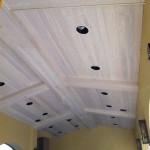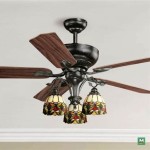Drop ceilings are a popular choice for many home and business owners looking for a way to decorate their space in a creative and cost-effective way. Not only do they provide the opportunity to switch up the look of a room, but they can also provide soundproofing and other benefits. But what many people don’t realize is that the type of ceiling tiles you use can have a big impact on the overall look and feel of the space. In this guide, we’ll explore the various types of ceiling tiles available for drop ceilings, as well as the pros and cons of each.
Types of Ceiling Tiles
Ceiling tiles come in a variety of materials, textures, and colors, so you can find just the right one to fit your space. The most common materials for ceiling tiles are fiberglass, vinyl, and mineral fiber, but there are also metal, plastic, and wood options available. Here’s a quick look at the pros and cons of each:
- Fiberglass: Fiberglass is the most common material for ceiling tiles, and it’s great for those looking for an affordable option. It’s also resistant to mold and mildew, making it a good choice for bathrooms and other high-humidity areas. However, it’s not as durable as other materials, and it can be prone to cracking or warping over time.
- Vinyl: Vinyl ceiling tiles are another popular option, and they come in a range of colors and patterns. They’re also resistant to moisture and humidity, making them a great choice for bathrooms and kitchens. However, they’re not as durable as other materials and can be prone to fading or discoloration over time.
- Mineral Fiber: Mineral fiber ceiling tiles are a great option for those looking for a durable and long-lasting material. They’re also resistant to fire, mildew, and moisture, making them a great choice for commercial spaces. However, they can be more expensive than other materials, and they can be difficult to install.
- Metal: Metal ceiling tiles are a great option for those looking for a more modern look. They’re durable and long-lasting, but they can be difficult to install and can be more expensive than other materials. They’re also prone to rusting over time.
- Plastic: Plastic ceiling tiles are a great option for those looking for a low-cost and lightweight material. They’re easy to install and come in a range of colors and patterns, but they’re not as durable as other materials and can be prone to warping over time.
- Wood: Wood ceiling tiles are a great option for those looking for an elegant and timeless look. They’re durable and long-lasting, and they come in a range of colors and patterns. However, they can be more expensive than other materials, and they can be difficult to install.
Benefits of Ceiling Tiles
Ceiling tiles can offer a range of benefits, from soundproofing to energy efficiency to decorative appeal. Here are some of the benefits of ceiling tiles for drop ceilings:
- Soundproofing: Ceiling tiles can help reduce noise levels by absorbing sound and preventing it from reverberating around a room. This can be especially beneficial in commercial spaces, such as offices and restaurants.
- Energy Efficiency: Ceiling tiles can help keep a space cool in the summer and warm in the winter, by reflecting or absorbing heat. This can help reduce energy bills and make a space more comfortable.
- Decorative Appeal: Ceiling tiles come in a range of colors and patterns, so you can find just the right one to fit your space. They can also be painted or decorated to add a personalized touch.
- Durability: Ceiling tiles can be long-lasting and durable, depending on the material. This can help reduce maintenance costs and ensure your space looks great for years to come.
Conclusion
Drop ceilings can be a great way to add decorative appeal and soundproofing to any space. But the type of ceiling tiles you use can have a big impact on the overall look and feel of the space. This guide has explored the various types of ceiling tiles available for drop ceilings, as well as the pros and cons of each. With the right ceiling tiles, you can create a beautiful and long-lasting space.















Related Posts








